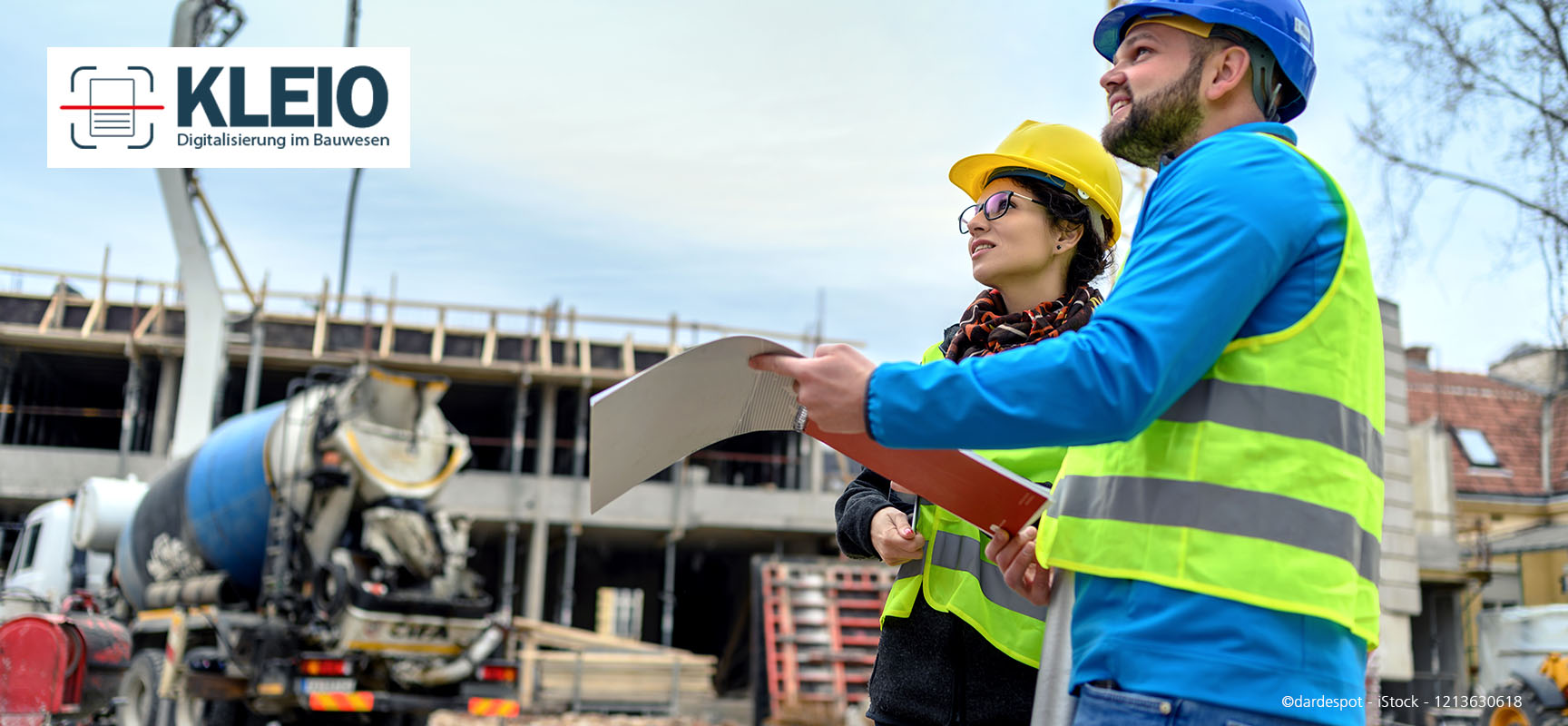As digitalization progresses, paper-based processes pose a challenge in many industries, including construction. The KLEIO project aims to overcome this challenge by digitizing delivery bills for ready-mixed concrete, which are traditionally in paper form.
Digitization in the construction industry: The KLEIO project

The challenge
The challenge of the project lies in the precise and efficient digitization of the paper forms. Another difficulty is to ensure the scalability of the application during heavy use while minimizing the error rate. The specialist and cloud users benefit from considerable time and cost savings, which are two key objectives of the project.
KLEIO incorporates results from the "SDaC – Smart Design and Construction" project funded by the German Federal Ministry for Economic Affairs and Climate Protection.
Our contribution
Using artificial intelligence (AI) and optical character recognition (OCR) technologies, specifically AWS Textract, the KLEIO solution developed at Fraunhofer ISST transforms paper-based documents into the digital format DIN Spec 91454. The cloud-based application is designed to be serverless, which significantly reduces configuration and administration costs. It follows the "pay per use" principle, which means that costs are only incurred for actual use.
In terms of technical implementation, KLEIO offers a user-friendly interface with support for REST and email communication as well as the option to output data in JSON and CSV. The use of AI for text recognition ensures a high level of accuracy when capturing
The result
The result of the project is a robust, user-friendly and highly scalable application that not only reduces errors, but also significantly increases efficiency in the areas of trade, construction and logistics. The digitized data is standardized according to DIN Spec 91454, which enables consistent and reliable data usage.
The successful implementation of projects such as KLEIO illustrates the potential of digitalization in the construction industry and provides valuable insights into the benefits of technology integration to optimize traditional processes. The project partner, Gemeinschaft für Überwachung im Bauwesen E. V., contributes significantly to the success of the project through its expertise.
This project is a prime example of how innovative technologies can transform traditional industries by increasing efficiency while reducing costs.
Partners
- Association for Monitoring in the Construction Industry E. V.
(contact person Dr.-Ing. Christoph Sievering)
 Fraunhofer Institute for Software and Systems Engineering
Fraunhofer Institute for Software and Systems Engineering